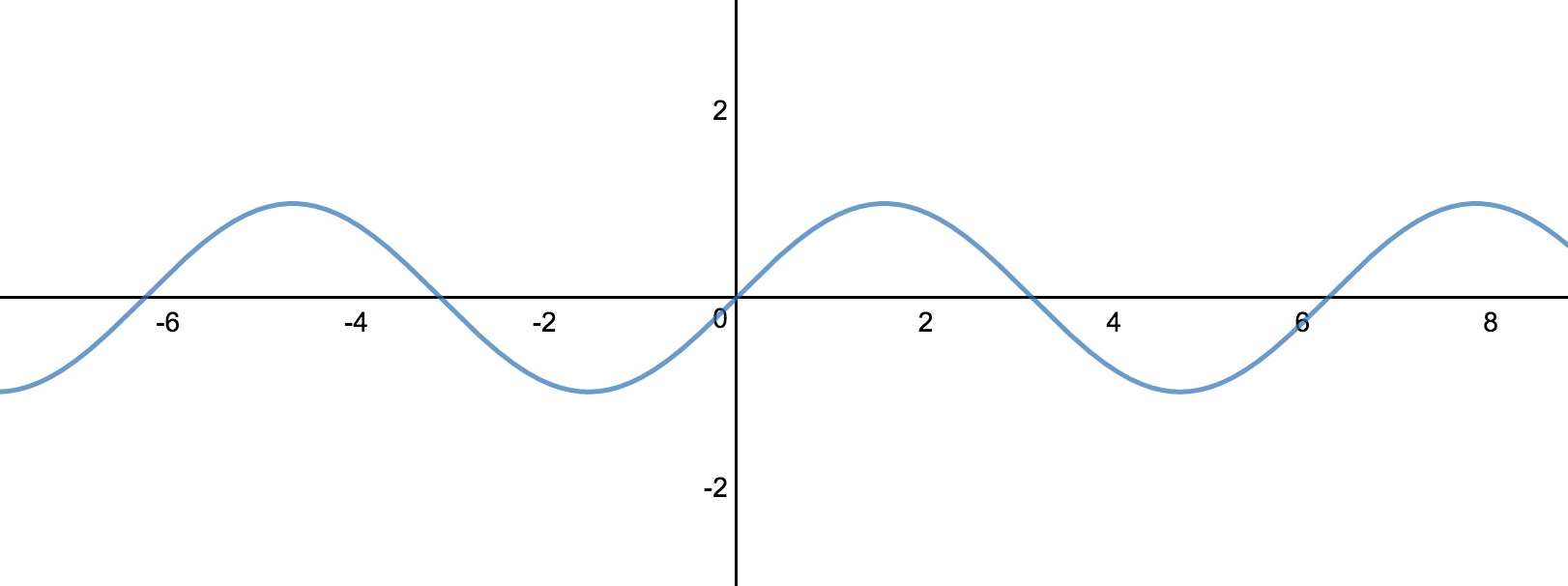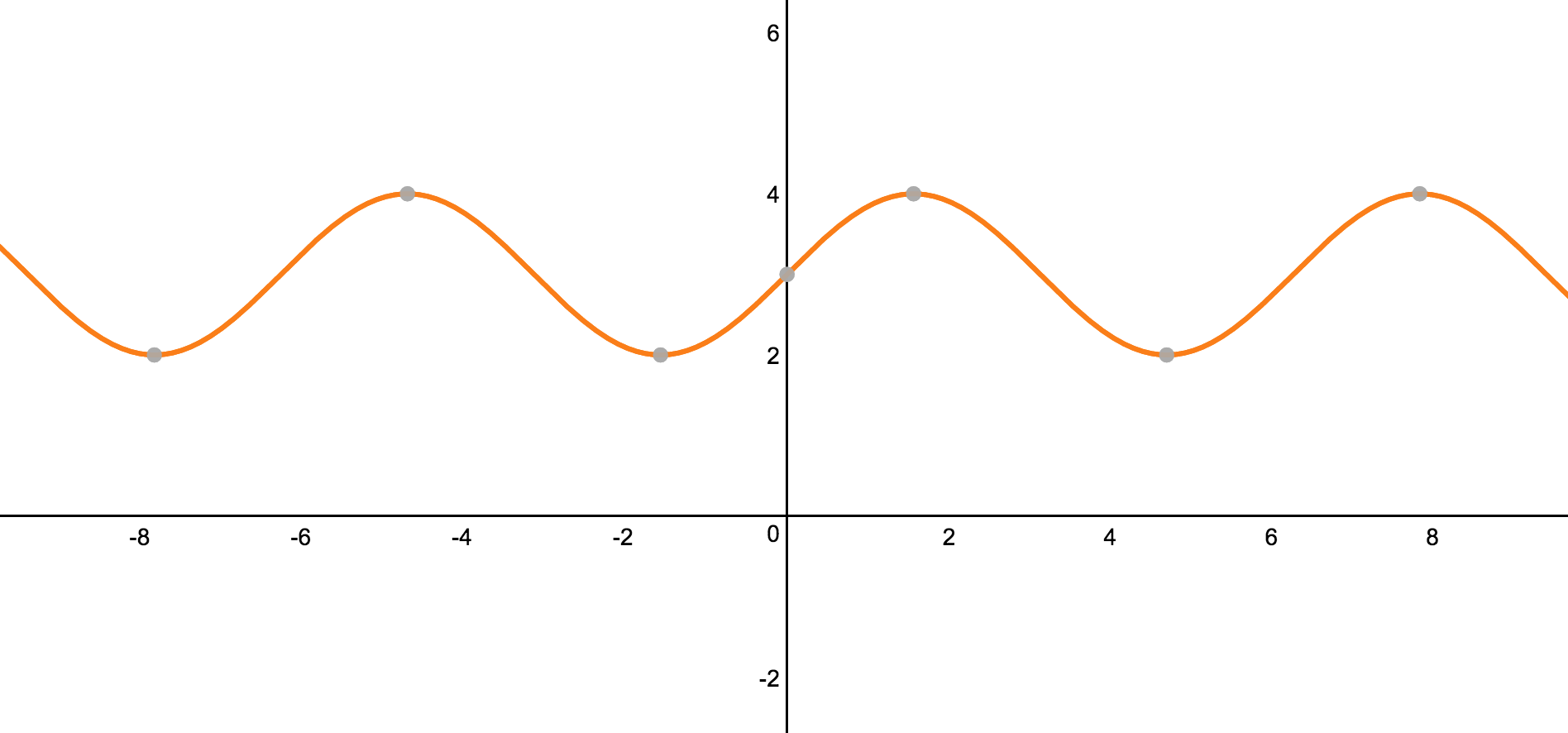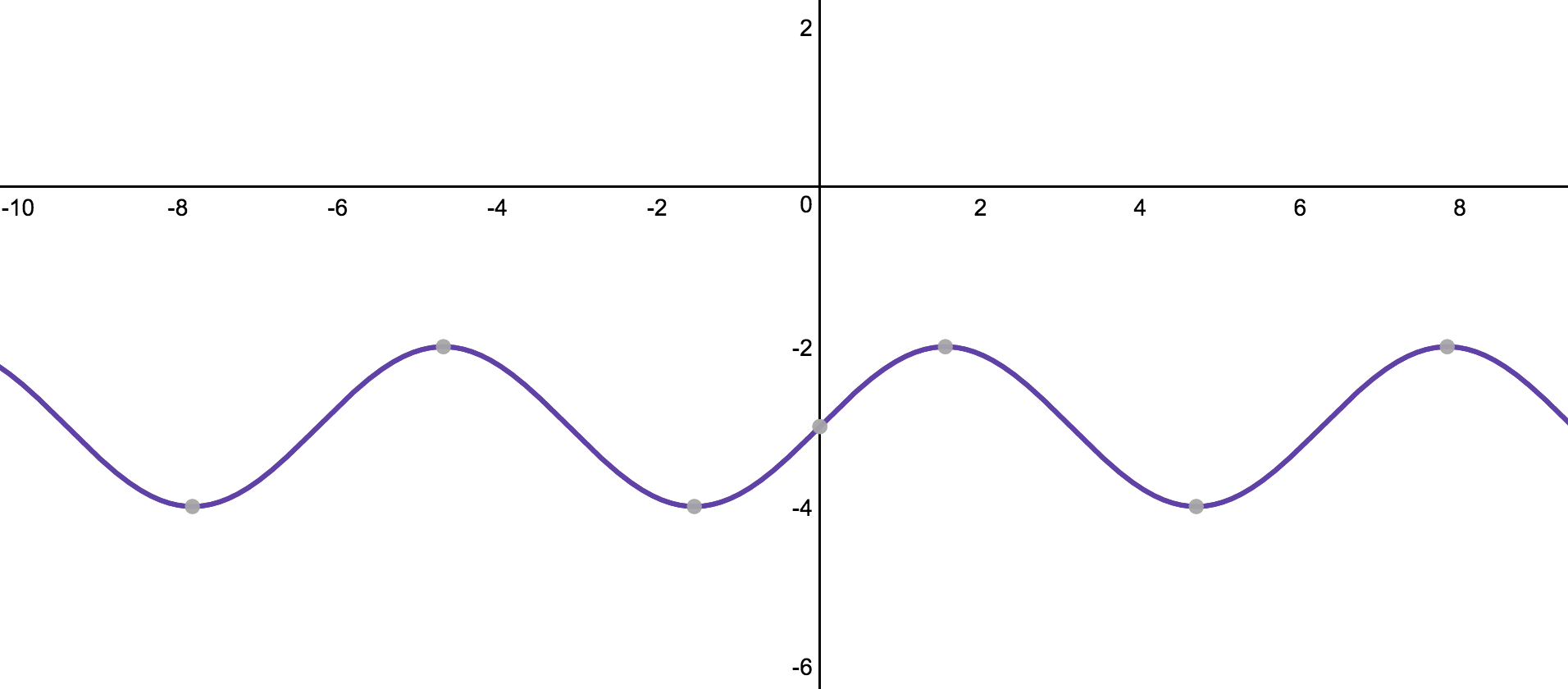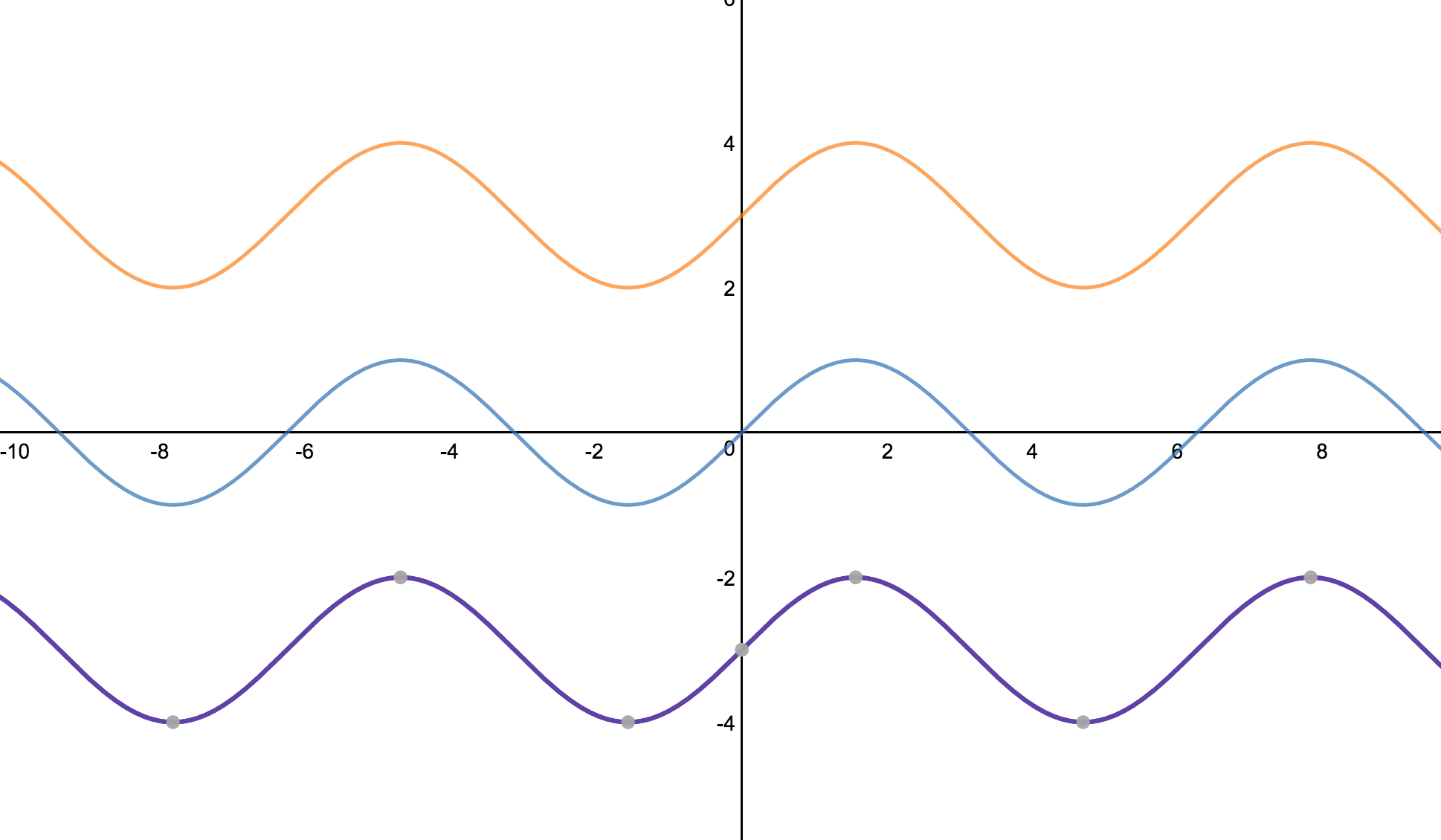How to find the vertical shift of a trigonometric function?
To find the vertical shift of a trigonometric function you will need to take a close look at the function that you are viewing. Let's start with the most basic function and move forward from there.
$$sin(x)$$

As you can see no shifts are happening to this function but if we add to the function a value of +3 the function is going to get shifted 3 values up in the y-axis.
$$sin(x)+3$$

The same concept applies if you use the same function and you shift it down -3 values in the y-axis.

The values that you add or remove from the base function are not co-dependent in any way. If you want to shift the function in the vertical direction you just have to add or remove from the base function.
